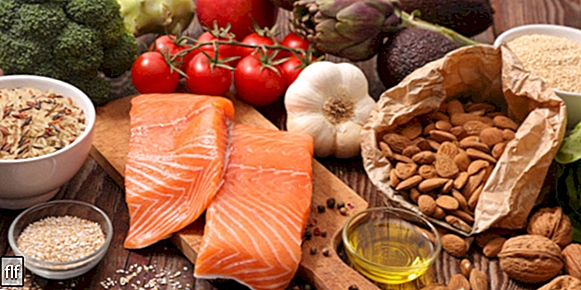- What is nutrition?
- types of nutrition
- The main nutrients
- What does a healthy diet involve?
- Consequences of a poor diet
- What is the nutritional or food pyramid?
We explain what nutrition is and what a healthy diet implies. In addition, the types of nutrients and the risks of a poor diet.

What is nutrition?
Nutrition is the biological process that occurs in a living being when your body absorbs, of the foods Y liquids, the nutrients he needs for his growth and the developing of vital functions. through the feedingThe body incorporates carbohydrates vitamins, minerals, proteins and fats.
The Humans They consume different types of food and, after physical and chemical processes, the body incorporates the nutrients from these foods and transforms them into energy to carry out its main functions, such as movement, the reproduction and the increase. A good and varied diet helps the proper functioning of the body and, for that, different types of food that provide different nutrients must be included in meals.
To maintain a healthy and balanced body, it is important to know the types of nutrients that exist, regulate the amount of food that is eaten according to personal physical needs, perform physical activity and stay hydrated. With a good diet, many of the common illnesses or propensities to develop illness can be avoided or alleviated.
The term nutrition is also used to refer to the science that studies food and its relationship with human health.Nutrition studies the processes that allow the body to incorporate nutrients from food and takes into account variables such as the importance of a balanced diet, staying hydrated and exercising regularly.
types of nutrition
Living beings can carry out two types of nutrition:
- autotrophic nutrition. It is the type of feeding carried out by organisms that produce their own food, such as floors and some bacteria. These organisms have the ability to synthesize simple and inorganic substances to convert them into organic and complex substances that they use in their metabolic processes. The autotrophs They are called producing organisms and create the organic material from carbon dioxide and use chemicals or light as energy.
- heterotrophic nutrition. It is the type of feeding carried out by organisms that feed on others to survive. In this group are bacteria, fungi (decomposers) and the animals (consuming organisms).
The main nutrients
Nutrients are the substances that are present in food and that the human body uses to perform its vital functions. It is important to know the different types of nutrients, the benefits they bring to the Body and the functions that each one fulfills, in order to have a healthy and balanced diet that provides everything the body needs.
There are two main types of nutrients:
MACRONUTRIENTS. They are nutrients that the body requires in large quantities and are responsible for introducing energy to the body. These are:
- protein. Are macromolecules that are formed by amino acids and that carry out vital functions within the organism, among which the development of cells Y fabrics. The body is made up of different proteins and each one fulfills a specific function.For example: keratin (builds tissues such as hair and nails), fibrin (involves in the coagulation process), hemoglobin (carries oxygen from the lungs to the rest of the body) and antibodies (are part of the immune system and protect and fight infections). Some of the foods that provide protein to the body are: fish, chicken, eggs, soy, red meat, nuts, legumes, among others.
- Carbohydrates. Are molecules that provide the energy that the body needs to perform all its functions. Carbohydrates are very important nutrients for the body and, when they enter the body, they are converted into glucose, which is the type of sugar that allows cell function. Some examples of carbohydrates are: starch, fructose, maltose and lactose. There are two main types of carbohydrates: complex carbohydrates, which are slow to assimilate, produce a feeling of satiety and are found in foods such as rice, pasta, bread, legumes and potatoes; and simple carbohydrates, which are quickly assimilated by the body, do not generate a feeling of satiety and are found in foods such as the sugar present in fruits and vegetables and the sugar that is added to desserts, candies, and cakes.
- Fats. Are lipids that fulfill fundamental functions for the organism, such as the reserve of Energy, the formation of cell membranes, the assimilation of vitamins and the protection of body organs. There are different types of fats (which are more or less beneficial for the body): saturated fats (present in animal fat, dairy products, sausages, among others), monounsaturated fats (present in vegetable oils and nuts), polyunsaturated fats (present in fish, shellfish, nuts and some oils) and trans fats (present in industrialized foods such as cereal bars, hamburgers, snacks and frozen products).
- Water. It is a substance that constitutes one of the essential nutrients for the life of living beings. A large portion of the human body is made up of this nutrient that enters the body through beverages. In addition to being an essential part of the composition of cells and organs, water plays a fundamental role in processes such as perspiration, regulation of temperature and blood purification.
MICRONUTRIENTS. They are nutrients that the body requires in small amounts and that fulfill specific functions. These are:
- vitamins. There are 13 compounds that the body needs and that perform vital functions such as: blood coagulation, development of bones and tissues, the functioning of the nervous system, the development of skin and sight, processes such as metabolism, hormonal development, brain and antibody development, among many others. Vitamins are: vitamin A, D, E, K, C and B1, B2, B3, B5, B6, B7, B9, B12 and are present in foods such as bananas, eggs, fish, red meat, nuts, seeds, milk , citrus, legumes, cereals and vegetables (such as avocado, broccoli, carrot, pumpkin, spinach, among many others).
- Minerals. They are inorganic substances, such as calcium, potassium, iodine, iron, magnesium, phosphorus, chlorine and sodium, that the body absorbs through food. These minerals participate in metabolic processes and have vital functions such as: the development and growth of bones and teeth, giving structure to tissues and the constitution of certain hormones. Some foods that provide minerals to the diet are: dairy products, fish, red meat, cereals, legumes, bananas, nuts, green leafy vegetables, among many others.
What does a healthy diet involve?

There are some recommendations for proper nutrition:
- Consume foods that provide macronutrients (carbohydrates, proteins and fats), which give energy to the body so that it can carry out its vital functions.
- Consume foods that provide the body with vitamins and minerals, which are non-energy micronutrients that carry out regeneration and development functions.
- Drink approximately two liters of water per day to keep the body well hydrated.
- Consume enough foods high in fiber, which is a type of carbohydrate that the digestive system does not digest and that, among other things, improves intestinal transit and regulates blood sugar levels.
- Always consult a health specialist, since the amount of nutrients and food to incorporate will depend on the nutritional needs of each person. For this, indicators such as the weight, height, the moment of the patient's life or exceptional situations such as pregnancy or the breastfeeding process.
- Check the labels of food products and know the ingredients used to produce each type of food and its nutritional benefits.
- Eat a variety of foods to have a balanced diet.
- Consume some products, such as salt and alcoholic beverages, in moderation.
- Accompany a balanced diet with physical exercise that helps the development and functioning of the body. For this it is important to carry out an energy balance according to the nutritional needs that are required according to the amount of physical activity that is carried out.
Consequences of a poor diet

There is a wide variety of diseases that can be linked to a poor or deficient diet.The lack of nutritious food can bring both physical and cognitive problems, especially in the early stages of growth.
Eating problems can be caused by poor nutrition caused by excessive consumption of food, by a lack of balance in the type of food consumed or by consuming poor quality elements. You can also give a malnutrition, which occurs when fewer nutrients are consumed than the body needs to carry out vital functions.
Among the most common diseases related to dietary imbalances are: arteriosclerosis, diabetes mellitus, high blood pressure, bulimia, vigorexia, anorexia, obesity, some types of cancer, avitaminosis, digestive disorders and malnutrition.
It is important to mention that a healthy diet not only depends on the intention of the individual, but also that, many times, people or groups cannot access some types of food, for economic reasons or humanitarian and social crises.
Lack of access to some foods or drinking water generates that a percentage of the population worldwide suffer from malnutrition or malnutrition, as they are unable to consume the nutrients that cover the basic needs of the body.
What is the nutritional or food pyramid?

The nutritional or food pyramid is a pyramid-shaped chart that represents, in a simple and dynamic way, the most important foods that an individual should consume in any diet. In addition, it recommends integrating other habits healthy as physical exercise and hydration.
Within the pyramid, foods are placed in order of importance of intake:
- Base. Cereal-based foods are included, such as pasta, bread, rice, flour and also tubers.These foods have a high content of carbohydrates and are essential because they provide energy to the body.
- Second level. Fruits and vegetables are located, which are a great source of carbohydrates, vitamins and fiber. It is recommended to consume at least five servings of this group per day.
- Third level. Dairy products, nuts, eggs, legumes and white meats such as chicken and fish are included. Its daily consumption is recommended and, more occasionally, red meats. These foods are rich in nutrients such as vitamins, proteins, minerals and fats.
- Tip. The sugars that are present in products that it is advisable to consume in moderation are located, because they contain trans fats, few nutrients and have a high caloric content. Here are the sausages, cakes, sweets, butter, among others.
